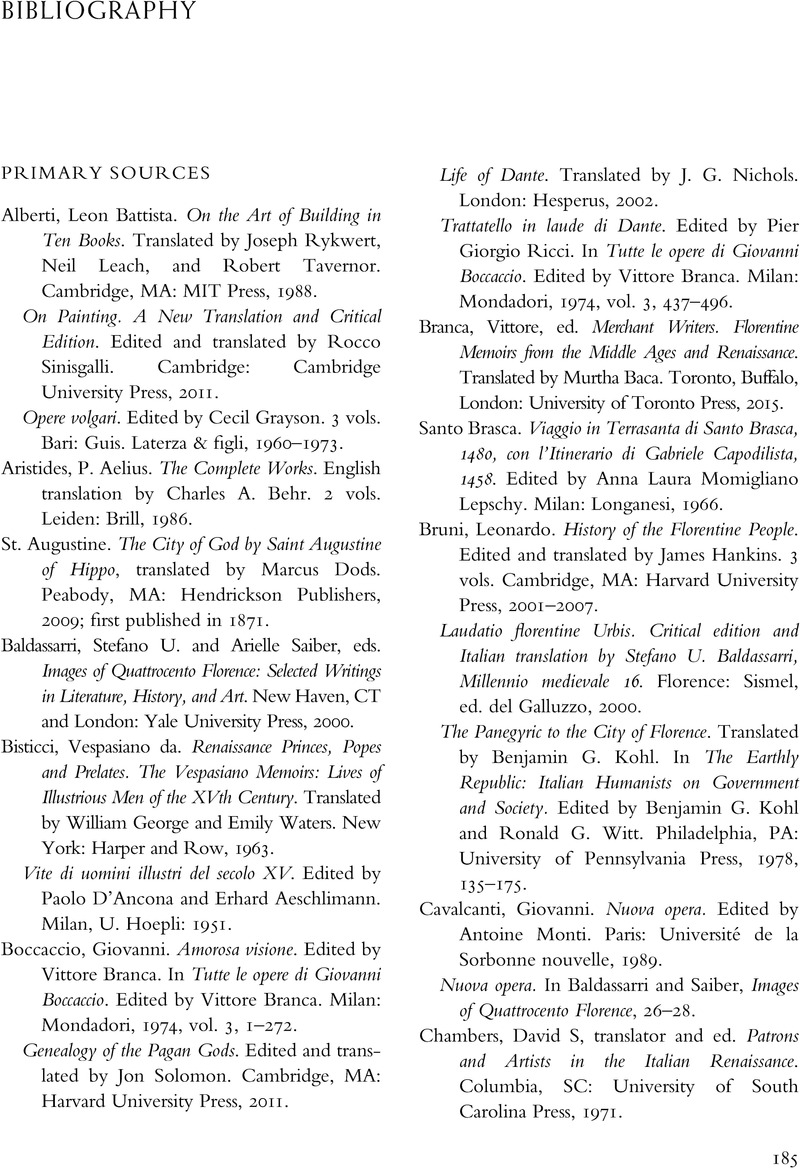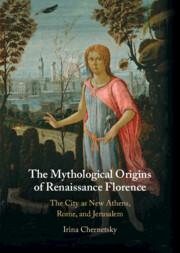Book contents
- The Mythological Origins of Renaissance Florence
- The Mythological Origins of Renaissance Florence
- Copyright page
- Contents
- Figures
- Acknowledgements
- Abbreviations
- Introduction
- Chapter One Florence as a New Athens
- Chapter Two Florence as a New Rome
- Chapter Three Florence as a New Jerusalem
- Chapter Four Florence as a New Florence
- Conclusion
- Appendix On the Etruscan Origins of the City of Florence
- Notes
- Bibliography
- Index
- References
Bibliography
Published online by Cambridge University Press: 07 August 2023
- The Mythological Origins of Renaissance Florence
- The Mythological Origins of Renaissance Florence
- Copyright page
- Contents
- Figures
- Acknowledgements
- Abbreviations
- Introduction
- Chapter One Florence as a New Athens
- Chapter Two Florence as a New Rome
- Chapter Three Florence as a New Jerusalem
- Chapter Four Florence as a New Florence
- Conclusion
- Appendix On the Etruscan Origins of the City of Florence
- Notes
- Bibliography
- Index
- References
Summary

- Type
- Chapter
- Information
- The Mythological Origins of Renaissance FlorenceThe City as New Athens, Rome, and Jerusalem, pp. 185 - 210Publisher: Cambridge University PressPrint publication year: 2022



